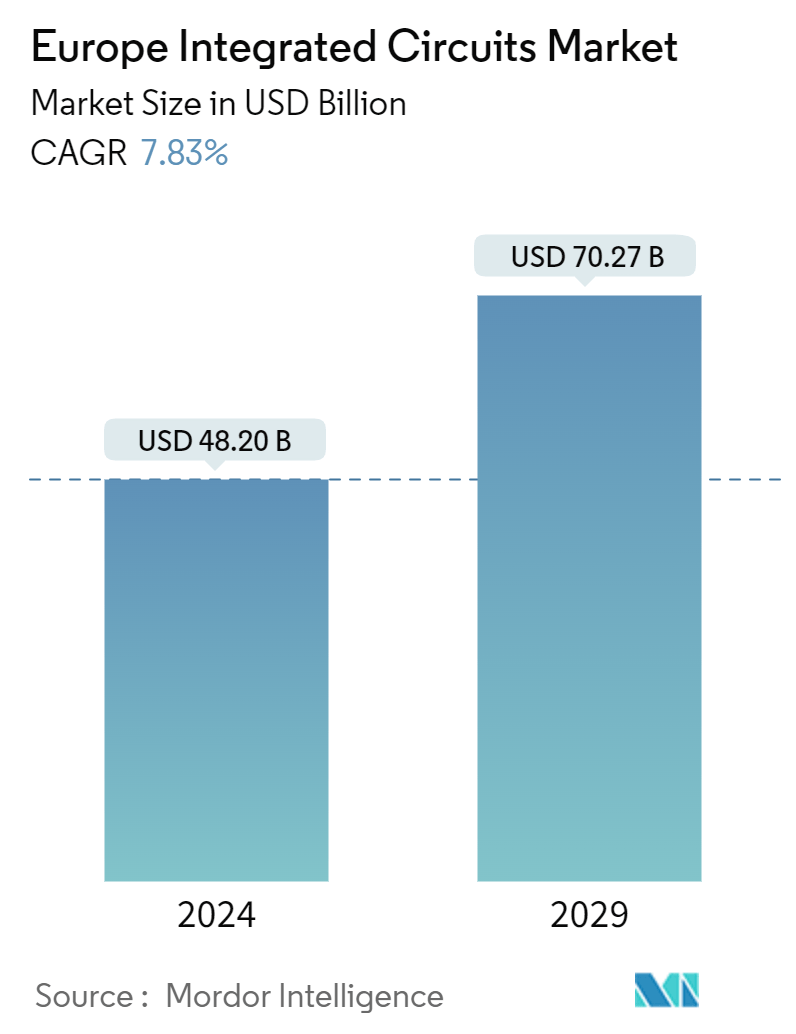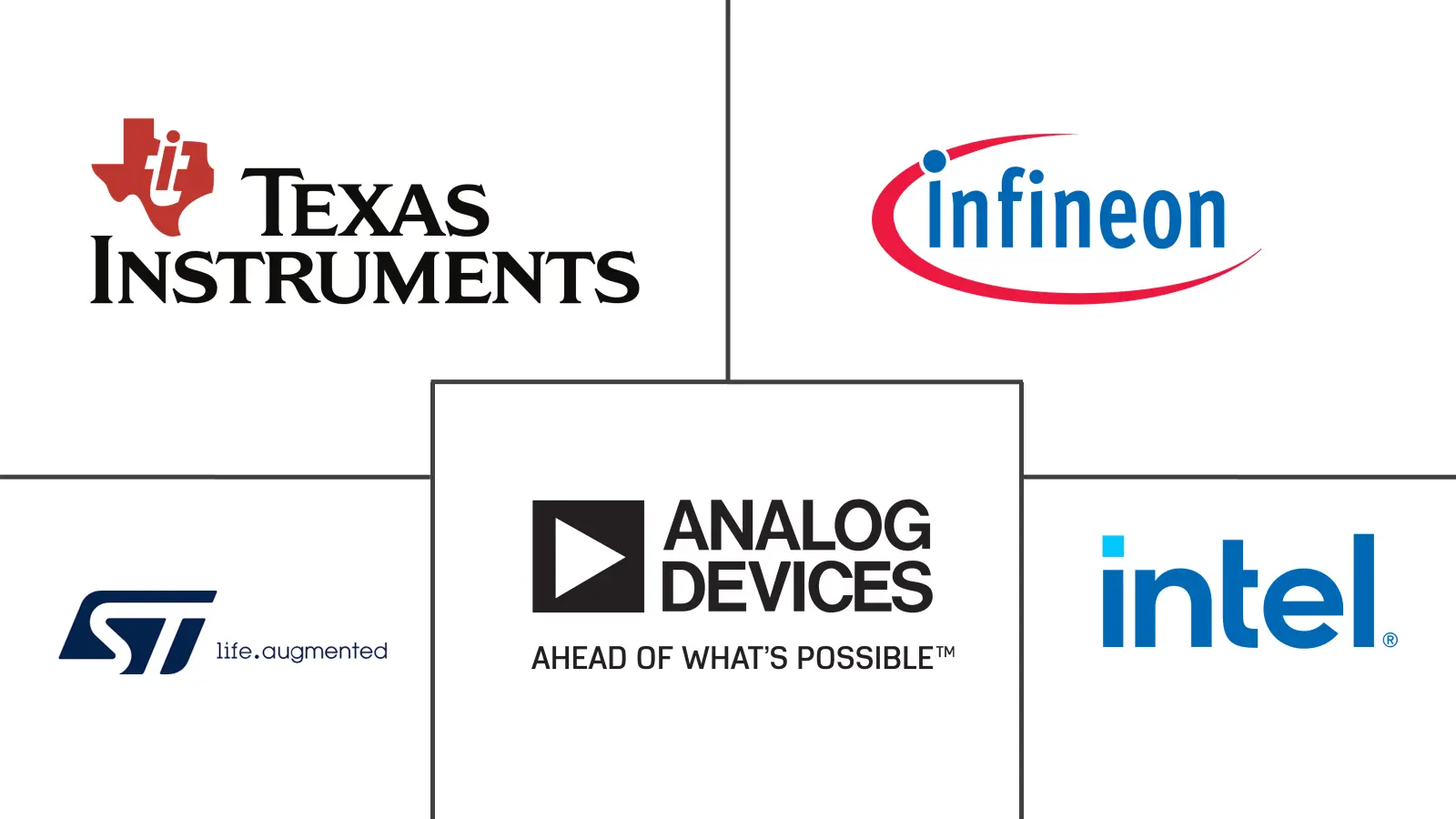Market Size of Europe Integrated Circuits Industry

| Study Period | 2019 - 2029 |
| Base Year For Estimation | 2023 |
| Market Size (2024) | USD 48.20 Billion |
| Market Size (2029) | USD 70.27 Billion |
| CAGR (2024 - 2029) | 7.83 % |
| Market Concentration | Low |
Major Players
*Disclaimer: Major Players sorted in no particular order |
Europe Integrated Circuits Market Analysis
The Europe Integrated Circuits Market size is estimated at USD 48.20 billion in 2024, and is expected to reach USD 70.27 billion by 2029, growing at a CAGR of 7.83% during the forecast period (2024-2029).
- The growth of integrated circuits (ICs) in Europe is influenced by several key factors that reflect technological advancements and market dynamics. The continuous evolution of ICs, particularly through advancements in miniaturization and integration, has led to more sophisticated and powerful chips. As ICs become more efficient, they are increasingly integrated into a broad range of applications, from consumer electronics to automotive systems.
- The increasing adoption of smartphones, feature phones, and tablets is driving the market. Analog ICs are utilized in various applications, including third and fourth-generation (3G/4G) radio base stations and portable device batteries. RFICs (radio frequency ICs) are analog circuits that typically operate within the frequency range of 3 kHz to 2.4 GHz (3,000 hertz to 2.4 billion hertz), with some circuits capable of functioning at approximately 1 THz (1 trillion hertz). These circuits are extensively used in cell phones and wireless devices.
- Further, the automotive sector is a major contributor to the IC market, particularly with the rise of electric vehicles and advanced driver-assistance systems. ICs are crucial for various automotive applications, including power management, engine control, and infotainment systems. As the automotive industry shifts toward more electronic and automated solutions, the demand for ICs is expected to grow.
- ICs are expected to perform a wide range of complex functions. The demand for advanced features and capabilities in electronic devices grows as technology advances. Designers need to incorporate complex circuits and algorithms to meet these requirements. This increased functionality leads to larger and more intricate designs, making it challenging to manage and optimize the complex interactions between different components.
- Geopolitical challenges, including the Russian invasion of Ukraine, China-US competition, elections, and the war in Israel, significantly impact the global supply chain, especially critical raw materials vital for traditional industries, defense, high-tech sectors, aerospace, and green energy. The Russia-Ukraine War and economic slowdown caused significant disruption in the semiconductor industry. The increased inflation and interest rates reduced consumer spending, hampered demand, and led to slow growth in the integrated circuit market.

